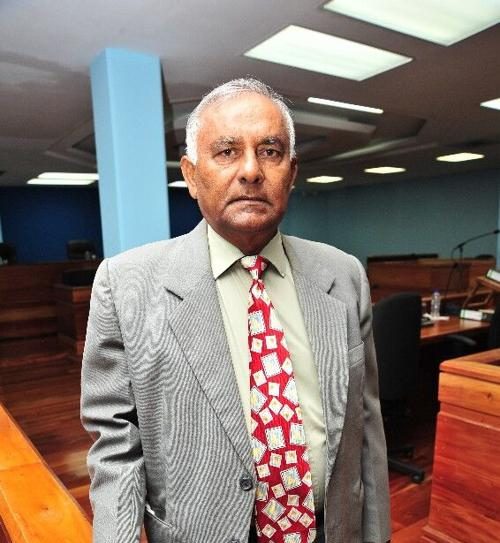The narrative that the Indian migrant labourers were gifted lands by the State free and gratis and that the freed African slaves were denied this benefit has been a source of historical grievance by Afro-Trinidadians and resentment against Indo-Trinidadians. On the basis of available facts and statistics and plausible assumptions, I have sought to throw light on this subject and place access to land and land ownership by Indos, Afros and other ethnic groups in a national context.
The transfer of land and, in some cases cash, to a small percentage of indentured immigrants who had completed their indentureship was not a gift but was offered in lieu of their return passage to India to which they were entitled by contract. Between 1869-1890 some 2,643 immigrants received a total of 19,055 acres of land and 3,209 received five pounds sterling in cash. Most of the land was in flood-prone and forested areas requiring significant effort for their development. If we assume that about half of the latter group used their cash to purchase some acreages, then about 4,000 indentured immigrants would have acquired land. If again, we assume that, of the 143,000 Indentured migrants who came to Trinidad, the vast majority, perhaps 100,000, chose to remain, then we can conclude that only about 4% of the immigrants who settled here would have received some acreage of land from the State. It is a far cry from the claim that all were gifted land.
It is also very likely that, given the immigrants’ penchant for thrift and their attachment to the land, many would have saved from their meagre earnings during their indentureship and, on their release, would have purchased varying small acreages of land thus adding to the numbers acquiring land under the Return Passage Compensation Scheme.
It is not known how many of the freed African slaves did acquire land from the state from their savings from wages earned but it would be fair to conclude that over the years, both for historical reasons and as a result of their attraction to land, Indo-Trinidadians came to be in possession of a significant number of small land holdings and residential plots particularly in the rural areas and thus enjoyed a much higher level of individual land ownership than Afro-Trinidadians.
However, by and large, Indo-Trinidadians did not own large extended acreages. These were under the control of the State and the owners of the sugar, cocoa and coffee estates who comprised both expatriates and those slave owners and their descendants (White, Mulatto and Mixed) invited to come to Trinidad from the Caribbean islands in 1783 under the Cedula of Population and granted huge tracts of land based on the number of slaves they owned. This influx of the French-Creoles was a defining period in Trinidad’s history of land distribution and land holding even before Emancipation and Indentureship.
It is not accurate to say that Afro-Trinidadians did not have access to State or State-enterprise lands either by sale, lease or gift. In the early nineteenth century, thousands of acres of state lands in the Hindustan/ Moruga and Valencia districts were granted to the ex Afro-American soldiers who fought on the side of the British in the Amercian wars of Independence and subsequently. When workers of the Trinidad Government Railways were retrenched in the late 50s /early 60s they were given a total of 20,000 acres of land at Wallerfield for farming. The vast majority of these retrenched workers were Afro-Trinidadians. Compare this total to the 12,000 or so acres leased in 2 acre plots to retrenched Caroni workers, many of whom today, 18 years later, have not received their leases. Even with this disposal, substantial acreage of Caroni’s lands, perhaps 40,000 acres, continues to be in the possession of the Afro-dominated state apparatus.
In addition, many Afro-Trinidadians benefitted from the disposal of lands by State enterprises whether by the oil companies, Caroni (1975) Ltd. or recently through the award of residential plots to retrenched workers with the closure of PETROTRIN. Moreover, the assignment of public housing units overwhelmingly for the benefit of Afro-Trinidadian families is a form of land distribution in which private and state lands appropriated for housing development are leased on favourable terms to approved applicants.
The State is by far the largest landholder in the country. In 1990, land under the ownership of the State inclusive of statutory authorities was 58 per cent of the total land surface area of the whole country. When we add land under state enterprises, that percentage would be much larger and probably nearer to 65 per cent. This percentage may have changed over the years but I do not think substantially. While in theory we are all part owners of State lands, in practical terms it is the political directorate who manage, utilize and dispose of State lands as they see fit. For 50 of the last 60 years the State has been under the direction and control of an Afro-dominated political party.
It seems to me that as TnT moves from being an agricultural economy to a semi-industrialized and service economy, land values and income derived from land ownership would change accordingly. A great deal of agricultural land under the ownership of Indo-Trinidadians would now be of lesser value than land used for residential, commercial and industrial purposes in urban, semi-urban and urban hinterland areas which are largely owned by non Indo-Trinidadians.
If the value of land assets owned by Indo-Trinidadians is 35 per cent or less of the grand total value of all land assets in the country, this circumstance could hardly be described as dominance given that they comprise 35 per cent of the population and any notion publicized that people of Indian descent have “captured the heights of property” in the total quantum and value of land in this country is calculated misinformation.
By Trevor Sudama
